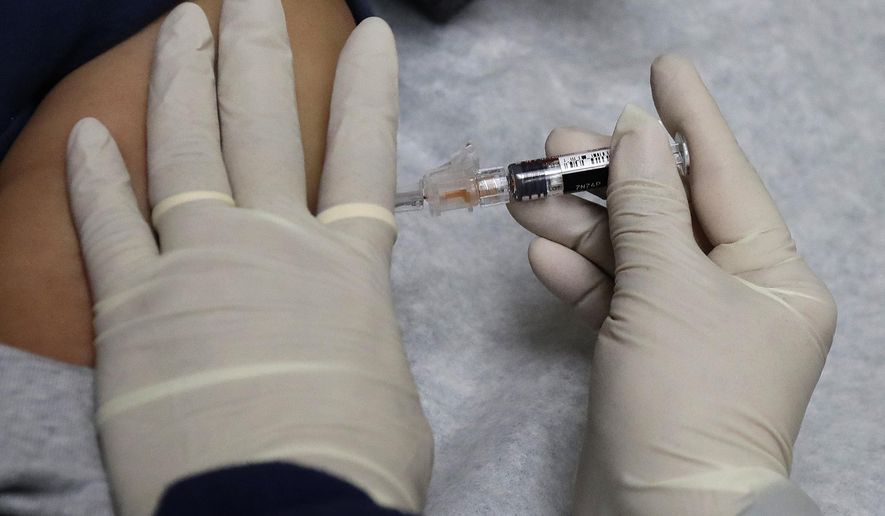Public health experts say the United States should expect a moderate to severe flu season, noting how the influenza season has played out in Australia.
Dr. William Schaffner, professor of preventive medicine and infectious diseases at Vanderbilt University, said the U.S. can expect a moderate to severe flu season because Australia is weathering such an experience, but added that the frequency and intensity of influenza infections are difficult to predict.
“If you’ve seen one flu season, you’ve seen one flu season,” Dr. Schaffner said. “Each one seems to be distinctive in its own way. And while what happens in Australia is always of interest, it’s not always predictive.”
Confirmed flu cases and calls about flu-related symptoms have been higher than usual Down Under, according to the public health information service Healthdirect Australia, which described flu activity levels as moderate.
Dr. Katelijn Vandemaele of the World Health Organization’s Global Influenza Program said flu activity in Australia was probably higher than some previous seasons. But she added that most of the peak levels of flu notifications, except for reports to Healthdirect, had happened earlier but did not exceed the peak level of the 2017 season.
Dr. Vandemaele said flu activity reports might have been higher due to more testing, noting that confirmed cases were higher than those in 2017, which was “a particularly bad year.”
However, flu-related hospitalizations aren’t very high in Australia as a whole, she said.
According to Healthdirect Australia, an average of 13,500 Australians over the age of 50 are hospitalized and more than 3,000 die from the flu each year.
In the U.S., the flu has caused between 9.3 million and 49 million illnesses, between 140,000 and 960,000 hospitalizations, and between 12,000 and 79,000 deaths each year since 2010, the Centers for Disease Control and Prevention estimates.
Last flu season, there were between 37 million to 42.9 million illnesses, 531,000 to 647,000 hospitalizations, and 36,400 to 61,200 deaths in the U.S.
Dr. Gustavo Ferrer, president of the Pulmonary Institute, said he expects the U.S. will experience an even worse flu season than the previous one, which lasted longer due to a new viral strain that emerged in February.
“We have seen in reports from Australia a large number of people with developing acute pneumonia and exacerbations of chronic phenomenon,” Dr. Ferrer said.
People 6 months and older should be get a flu vaccine before the U.S. season starts, Dr. Schaffner said, adding that the flu typically appears in November and gains momentum before trailing off in March.
WHO made its selection of viral strains for this season’s vaccine in February and March. The CDC says flu vaccines protect against three or four viruses.
Vaccine makers have said they will provide between 162 million and 169 million doses for the U.S. market this season.
Dr. Vandemaele said it is difficult to say how effective this year’s vaccine will be, noting its effectiveness depends on which specific viruses circulate in coming months and how well the vaccine will match them.
Effectiveness rates average around 40%. Last year, the vaccine was 29% effective, dropping from 47% in February when a group of new viruses rose to prominence.
Dr. Ferrer said it is challenging to develop a vaccine due to the multiple variants of influenza that mutate and the length of time between when the viruses are picked for the vaccine and the start of the season in the U.S.
The technology to quickly develop a vaccine or to modify it isn’t available for the market right now, he added.
While effectiveness rates can fluctuate, Dr. Schaffner said the vaccine provides the “underappreciated benefit” of less severe infections and decreases the likelihood of experiencing complications like pneumonia and hospitalization.
• Shen Wu Tan can be reached at stan@washingtontimes.com.




Please read our comment policy before commenting.